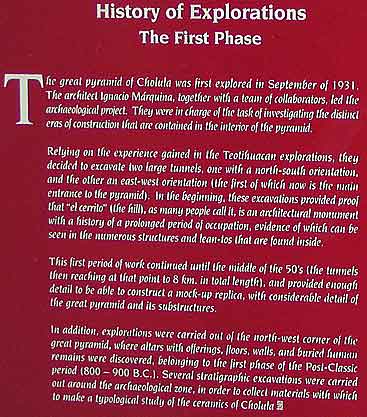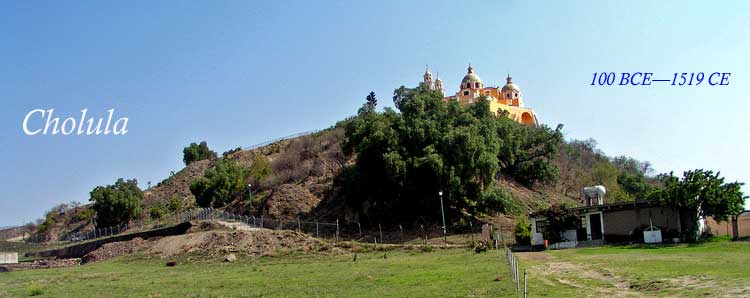 |
Cholula ("Place of those who fled" or "Water that falls in the place of flight") is one of the few such ancient sites that has enjoyed continued occupation from its beginnings until the present day. The Great Pyramid of Cholula—today a platform for the 1594 Iglesia de Nuestra Señora de los Remedios (Church of Our Lady of the Remedies)—is one of the largest pyramids in the world at almost 6 million cubic yards by volume (Kufu's pyramid at Giza is taller and a pyramid at El Mirador in Guatemala may be larger). The first of its six construction stages was contemporary with the pyramids of the Moon and Sun at Teotihuacan but work on the pyramid continued until the 8th century. Its ultimate destruction was at the hands of Cortez who, in 1519, massacred the population and began to replace the temples of the pyramid with churches. |
|
|
Although the huge structure will probably never be excavated (as were the temples at Teotihuacan) because of the church on its top and the habitation all around, the interior has been explored by means of tunnels. The models, in the site's small museum, provide an illustration of how the monument may have looked at different stages of its construction and, also, how imposing it would be even today were the soil, structures, and debris removed. 
|
 Even with the models archaeologists and artists have provided it is difficult for visitors today to comprehend the immensity of the Cholula ritual complex. For, in addition to the pyramids-within-pyramids that comprise the Great Pyramid itself, numerous structures of almost comparable size butt against it (and may actually have been incorporated into an even larger pyramid). Such a one is the Plaza of the Altars, which lies on the Pyramid's south side (model, above, and below). |
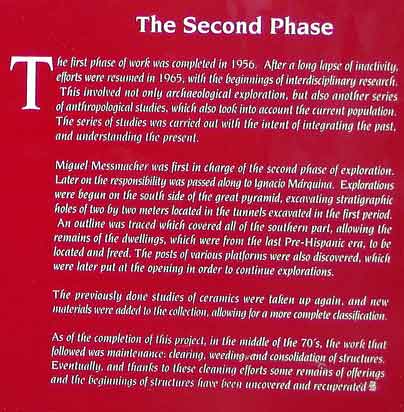
|
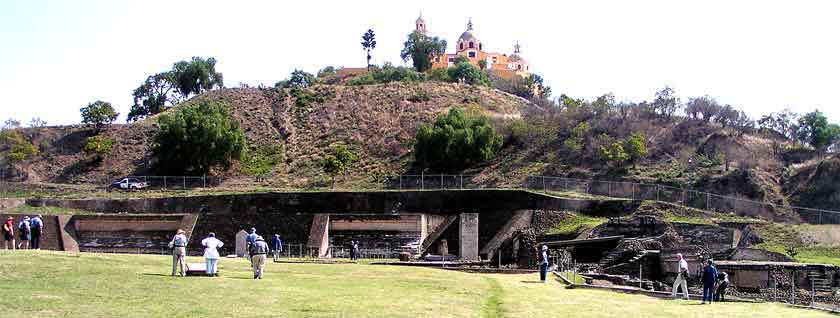 |
Offerings of sea shells were found with these altars. Sea shells are associated with the god Quetzalcoatl. |  |
 |
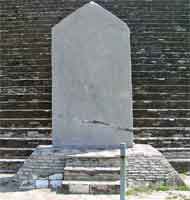 |
 |
The core of the Great Pyramid, which is contemporary with the pyramids of Teotihuacan, was accompanied by other structures of the same period. The so-called Teotihuacan Building (left), which is to the east of the Courtyard of the Altars, and the building denominated "F" (west of the Great Pyramid), evidence the talud/tablero style characteristic of Teotihuacan. |
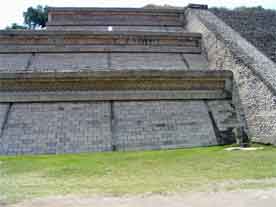 |
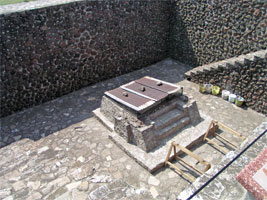 |
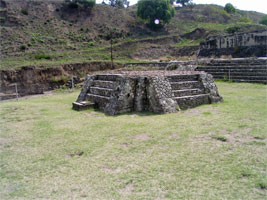 |
Here are two more of the many altars at Cholula. Altar Mexica (far left) is one of three altars that date from the Postclassic period (after 900). At near left is an altar with an unsettling history. Built late in the prehistory of Cholula, after the abandonment of the Great Pyramid and the Courtyard of the Altars, one of the altar's steps was found to contain the deformed skulls of two children. Spanish chroniclers report stories of 6- and 7-year-old children being sacrificed in order to be messengers to the rain god, Tlaloc: Bring rain, break the drought! |
 |
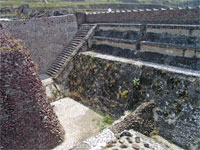 |
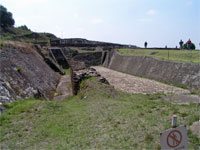 |
 |
Above is a sample of the all but countless barely excavated structures in and around the Great Pyramid. Below is one of several murals at Cholula. This one—Mural of the Drinkers—is displayed in the site's museum. Dating from the 3rd or 4th century, it is almost 200 feet long. While clearly the depiction is of revelry or, perhaps, a ceremony during which something is being drunk, the substance is probably not alcohol but pulque, a hallucinogenic drink made from maguey, a type of agave. |


